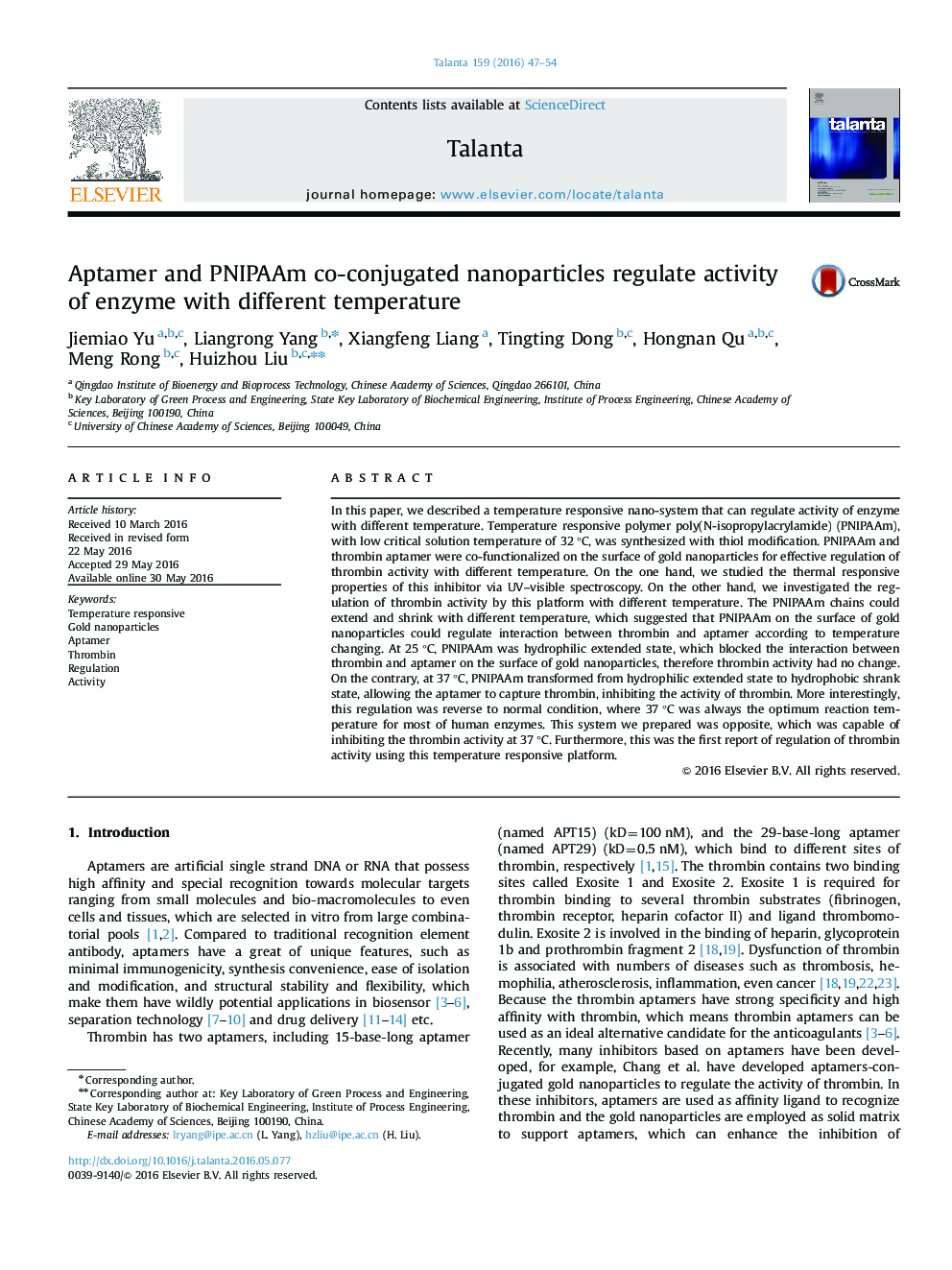| کد مقاله | کد نشریه | سال انتشار | مقاله انگلیسی | نسخه تمام متن |
|---|---|---|---|---|
| 1241745 | 1495777 | 2016 | 8 صفحه PDF | دانلود رایگان |

• Regulation of adsorption/desorption of protein with different temperature.
• Using temperature can affect aggregation and dispersion of gold nanoparticles.
• Aptamer provides high affinity and selectivity to corresponding target.
• This method could be applied for other targets that have corresponding aptamer.
In this paper, we described a temperature responsive nano-system that can regulate activity of enzyme with different temperature. Temperature responsive polymer poly(N-isopropylacrylamide) (PNIPAAm), with low critical solution temperature of 32 °C, was synthesized with thiol modification. PNIPAAm and thrombin aptamer were co-functionalized on the surface of gold nanoparticles for effective regulation of thrombin activity with different temperature. On the one hand, we studied the thermal responsive properties of this inhibitor via UV–visible spectroscopy. On the other hand, we investigated the regulation of thrombin activity by this platform with different temperature. The PNIPAAm chains could extend and shrink with different temperature, which suggested that PNIPAAm on the surface of gold nanoparticles could regulate interaction between thrombin and aptamer according to temperature changing. At 25 °C, PNIPAAm was hydrophilic extended state, which blocked the interaction between thrombin and aptamer on the surface of gold nanoparticles, therefore thrombin activity had no change. On the contrary, at 37 °C, PNIPAAm transformed from hydrophilic extended state to hydrophobic shrank state, allowing the aptamer to capture thrombin, inhibiting the activity of thrombin. More interestingly, this regulation was reverse to normal condition, where 37 °C was always the optimum reaction temperature for most of human enzymes. This system we prepared was opposite, which was capable of inhibiting the thrombin activity at 37 °C. Furthermore, this was the first report of regulation of thrombin activity using this temperature responsive platform.
Figure optionsDownload as PowerPoint slide
Journal: Talanta - Volume 159, 1 October 2016, Pages 47–54